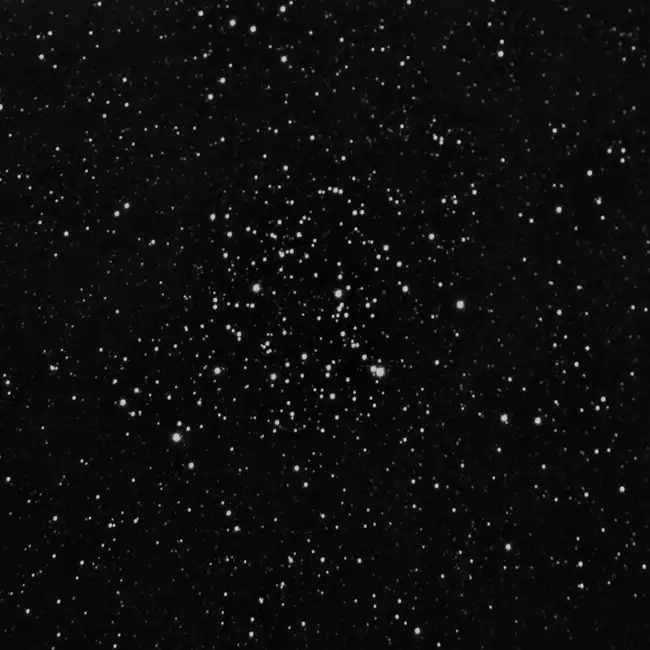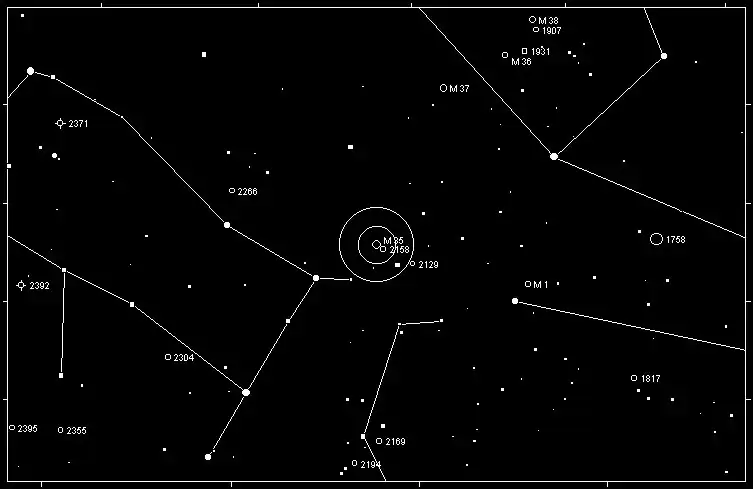Messier 35 (M35), also known as NGC 2168, is a stunning open star cluster located in the constellation Gemini. This celestial object is a magnificent collection of stars loosely bound by gravity, offering a spectacular sight for both amateur and seasoned astronomers. M35 is notable for its rich star field, containing hundreds of stars that are spread across an area about as large as the full moon. The stars in M35 are relatively young, with an estimated age of 110 million years, making it a vibrant and active cluster.
Magnitude
M35 has an apparent magnitude of 5.3, making it just visible to the naked eye under very dark skies. However, it truly shines when viewed through binoculars or a small telescope. Its relatively bright magnitude and large size make it an ideal target for amateur astronomers looking to explore the wonders of the winter sky.

Season of Prominence
Messier 35 is best observed during the winter months, particularly from December to March. During this period, Gemini is well-placed in the night sky, making M35 an excellent object to observe on clear winter nights. Its prominence during the winter season makes it a popular target for astronomers looking to enjoy the crisp, cold skies.
Constellation
Messier 35 is located in the constellation Gemini, which is one of the zodiac constellations. Gemini is easily recognizable due to its two bright stars, Castor and Pollux, which represent the mythological twins. M35 is situated near the feet of the twins, adding to the constellation’s charm.
How to Find Messier 35
To locate M35, start by identifying the constellation Gemini in the night sky. Look for the two bright stars, Castor and Pollux, which form the heads of the twins. From Pollux, trace a line towards the southwest, where you will find the stars marking the feet of the twins. M35 is located near the star Eta Geminorum, making it relatively easy to find. Using a low-power telescope or binoculars, you will be able to spot the cluster as a fuzzy patch of light. Increasing the magnification will reveal the individual stars within the cluster, offering a breathtaking view.

History
Messier 35 was first discovered by the Swiss astronomer Philippe Loys de Chéseaux in 1745. However, it was independently rediscovered and cataloged by the French astronomer Charles Messier on August 30, 1764. Messier included it in his famous catalog of nebulae and star clusters, where it earned the designation M35. Since its discovery, M35 has been a popular object of study and observation, with astronomers exploring its composition, age, and the dynamics of its stellar population.
In more recent times, astronomers have studied M35 using various telescopes and techniques to better understand the evolution of open clusters. Its relatively young age and proximity to Earth (approximately 2,800 light-years away) make it an excellent target for studying the formation and evolution of stars within clusters.
Conclusion
Messier 35 is a beautiful open star cluster that offers a stunning view to anyone willing to seek it out in the winter skies. Its brightness and size make it accessible to amateur astronomers, while its rich history and scientific value continue to intrigue professionals. Located in the constellation Gemini, M35 is a must-see object for anyone interested in exploring the wonders of the universe. Whether you're viewing it through binoculars or a telescope, M35 promises to be a rewarding experience for stargazers of all levels.
